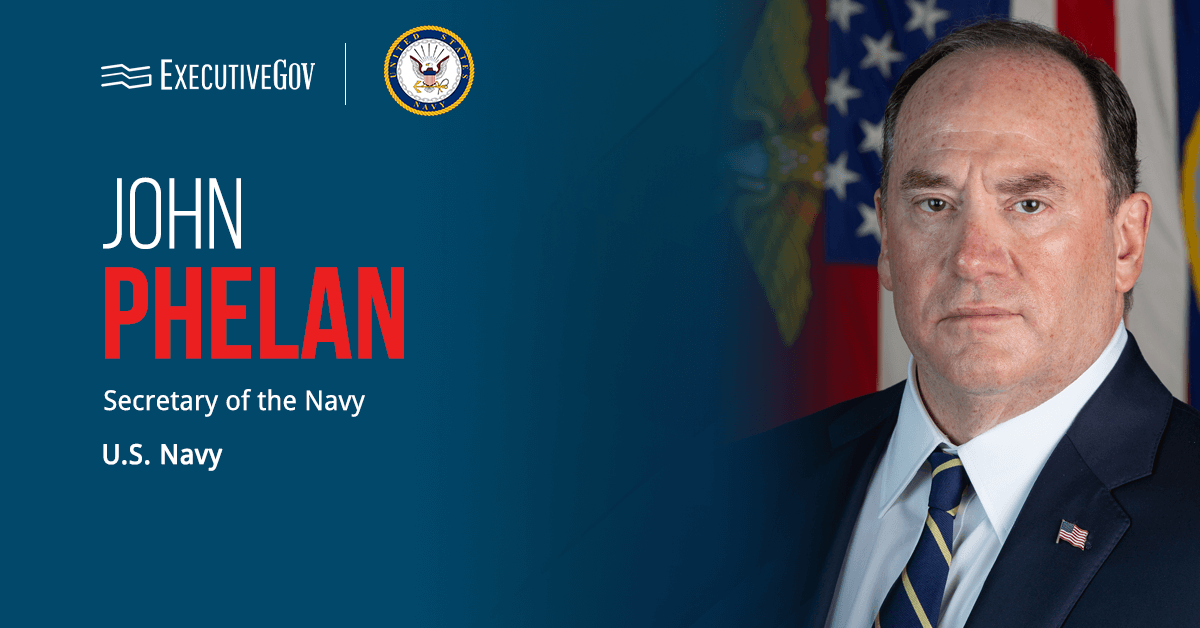John Phelan, the newly appointed secretary of the Navy, has identified readiness as his priority for the service. The official joined Adm. James W. Kilby, acting chief of naval operations, during a recent House Appropriations Committee hearing to discuss current military challenges and how they plan to address them, the Department of Defense said Thursday.

Learn more about the critical challenges and opportunities that the U.S. Navy is currently facing at the Potomac Officers Club’s 2025 Navy Summit on Aug. 26. Register for the in-person event here.
Table of Contents
Strengthening US Shipbuilding Capability
Part of Phelan’s plan for the Navy is to rebuild the “hollowed-out maritime industrial base,” which he told lawmakers is critical to national security.
According to the official, he recently visited eight shipyards across the East Coast and the Indo-Pacific and spoke with leaders and tradesmen at each location. In one shipyard in Japan, he noted that workers get the same productivity in one shift that American shipyards would achieve in three shifts.
One factor that he noticed that is different in Japan compared to the U.S. is age. Phelan explained that the average age of the Japanese shipyard workers is 50, which is a reflection that shipbuilding is a career. Japanese welders also do not deal with paperwork, whereas American welders spend up to 40 percent of their time filling out forms.
“I now have a clear picture of where our shipbuilding dollars have been going, and [I] am developing a plan to fix what’s broken,” he stated.
Kilby admitted during the hearing that Navy platforms “are not as ready as they need to be.” The service is aiming to ensure that 80 percent of ships, submarines and aircraft are combat-surge-ready by January 2027.
The Navy, he shared, is working on reducing maintenance delay through training, modernization and sustainment. The official also noted that consistent and predictable funding will be critical to readiness efforts.
Recruiting More Sailors, Making More Munitions
Kilby also flagged workforce shortage as another challenge for the Navy. He said the service needs approximately 23,000 sailors to man ships, but the Navy is on track to significantly reduce the shortage by the end of fiscal 2026.
“We’re committed to attracting and developing Americans who can innovate, solve hard problems and dominate in combat,” commented the acting naval operations chief.
He also noted that the Navy is seeing a strain on the munitions industrial base, a problem highlighted by ordinance expenditures in the Red Sea against the Houthis.
Kilby assured that the Navy is working with contractors and new entrants to the maritime industrial base to develop kinetic and non-kinetic weapons at speed and scale.





